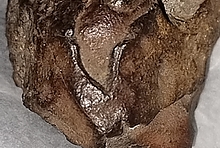Home PageAbout MindatThe Mindat ManualHistory of MindatCopyright StatusWho We AreContact UsAdvertise on Mindat
Donate to MindatCorporate SponsorshipSponsor a PageSponsored PagesMindat AdvertisersAdvertise on Mindat
Learning CenterWhat is a mineral?The most common minerals on earthInformation for EducatorsMindat ArticlesThe ElementsThe Rock H. Currier Digital LibraryGeologic Time
Minerals by PropertiesMinerals by ChemistryAdvanced Locality SearchRandom MineralRandom LocalitySearch by minIDLocalities Near MeSearch ArticlesSearch GlossaryMore Search Options
The Mindat ManualAdd a New PhotoRate PhotosLocality Edit ReportCoordinate Completion ReportAdd Glossary Item
Mining CompaniesStatisticsUsersMineral MuseumsClubs & OrganizationsMineral Shows & EventsThe Mindat DirectoryDevice SettingsThe Mineral Quiz
Photo SearchPhoto GalleriesSearch by ColorNew Photos TodayNew Photos YesterdayMembers' Photo GalleriesPast Photo of the Day GalleryPhotography
╳Discussions
💬 Home🔎 Search📅 LatestGroups
EducationOpen discussion area.Fakes & FraudsOpen discussion area.Field CollectingOpen discussion area.FossilsOpen discussion area.Gems and GemologyOpen discussion area.GeneralOpen discussion area.How to ContributeOpen discussion area.Identity HelpOpen discussion area.Improving Mindat.orgOpen discussion area.LocalitiesOpen discussion area.Lost and Stolen SpecimensOpen discussion area.MarketplaceOpen discussion area.MeteoritesOpen discussion area.Mindat ProductsOpen discussion area.Mineral ExchangesOpen discussion area.Mineral PhotographyOpen discussion area.Mineral ShowsOpen discussion area.Mineralogical ClassificationOpen discussion area.Mineralogy CourseOpen discussion area.MineralsOpen discussion area.Minerals and MuseumsOpen discussion area.PhotosOpen discussion area.Techniques for CollectorsOpen discussion area.The Rock H. Currier Digital LibraryOpen discussion area.UV MineralsOpen discussion area.Recent Images in Discussions
PhotosDoes this qualify as a South Dakota gold specimen?

27th Mar 2024 12:51 UTCEd Clopton 🌟 Expert

27th Mar 2024 13:30 UTCRolf Luetcke Expert
I agree, unless visible gold can be seen in a photo, wouldn't put this as a gold specimen.

27th Mar 2024 14:22 UTCBeau Crockett
27th Mar 2024 15:03 UTCKevin Conroy Manager
27th Mar 2024 15:54 UTCUwe Kolitsch Manager

28th Mar 2024 00:26 UTCBeau Crockett
27th Mar 2024 15:09 UTCHarold Moritz 🌟 Expert
It should be labeled as the rock type/formation. Take a look at the pix/captions of chunks of gold-bearing rock displayed around the visitor center there that I posted recently to see if they match your core (I don't think they do). The caption for this photo
describes the various rock types visible in the open pit (summarized from a panel in the visitor center), but the core may be from underground parts of the mine not described. And the rock types vary on a small scale, so not sure you can make a certain ID on the core's rock type. Maybe it's the Poorman Formation schist, which does have some gold in it. But don't quote me on that!
27th Mar 2024 15:11 UTCKevin Conroy Manager
28th Mar 2024 06:16 UTCFrank K. Mazdab 🌟 Manager
28th Mar 2024 09:16 UTCKeith Compton 🌟 Manager

29th Mar 2024 16:59 UTCRolf Luetcke Expert
This photo is 1 cm across and shows the mineral well.

29th Mar 2024 17:01 UTCRolf Luetcke Expert

1st Apr 2024 16:38 UTCThomas Loomis 🌟 Expert
1st Apr 2024 21:36 UTCRalph S Bottrill 🌟 Manager




Mindat.org is an outreach project of the Hudson Institute of Mineralogy, a 501(c)(3) not-for-profit organization.
Copyright © mindat.org and the Hudson Institute of Mineralogy 1993-2024, except where stated. Most political location boundaries are © OpenStreetMap contributors. Mindat.org relies on the contributions of thousands of members and supporters. Founded in 2000 by Jolyon Ralph.
Privacy Policy - Terms & Conditions - Contact Us / DMCA issues - Report a bug/vulnerability Current server date and time: April 29, 2024 14:32:02
Copyright © mindat.org and the Hudson Institute of Mineralogy 1993-2024, except where stated. Most political location boundaries are © OpenStreetMap contributors. Mindat.org relies on the contributions of thousands of members and supporters. Founded in 2000 by Jolyon Ralph.
Privacy Policy - Terms & Conditions - Contact Us / DMCA issues - Report a bug/vulnerability Current server date and time: April 29, 2024 14:32:02














